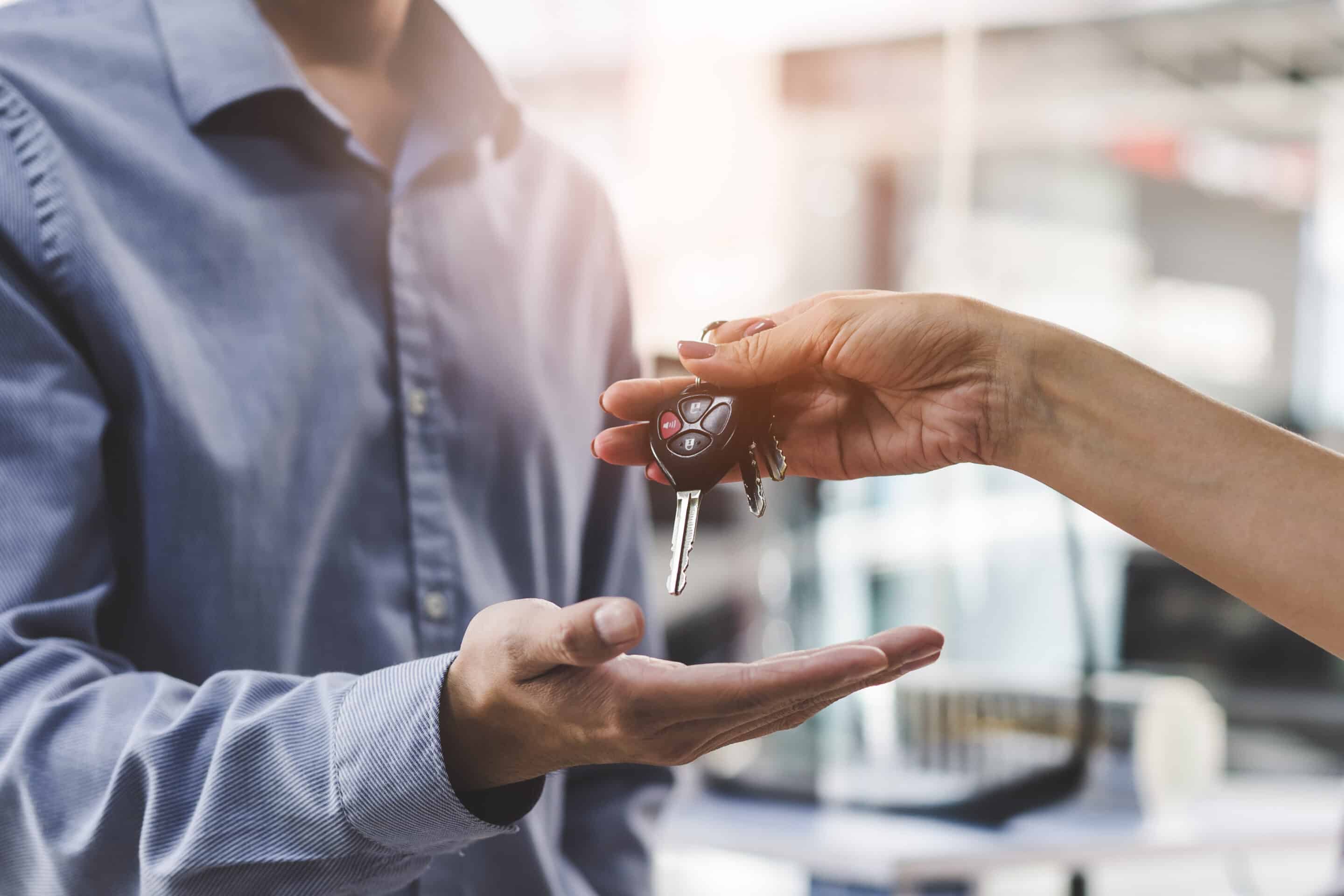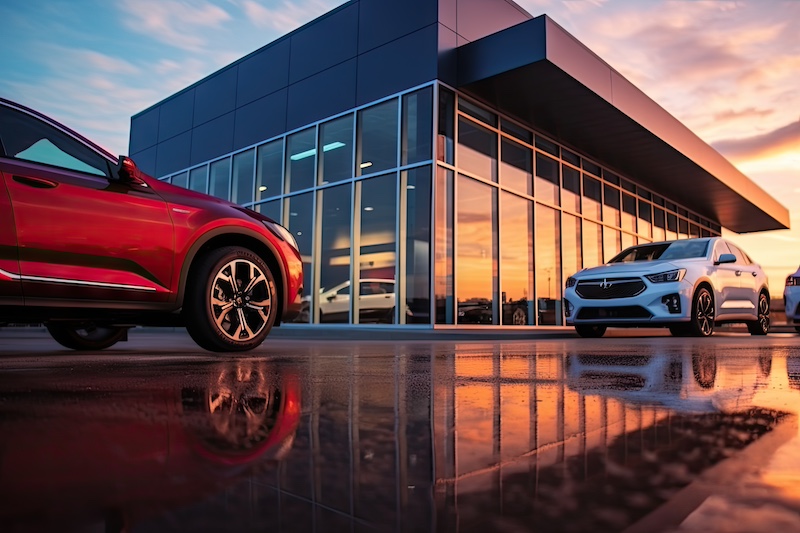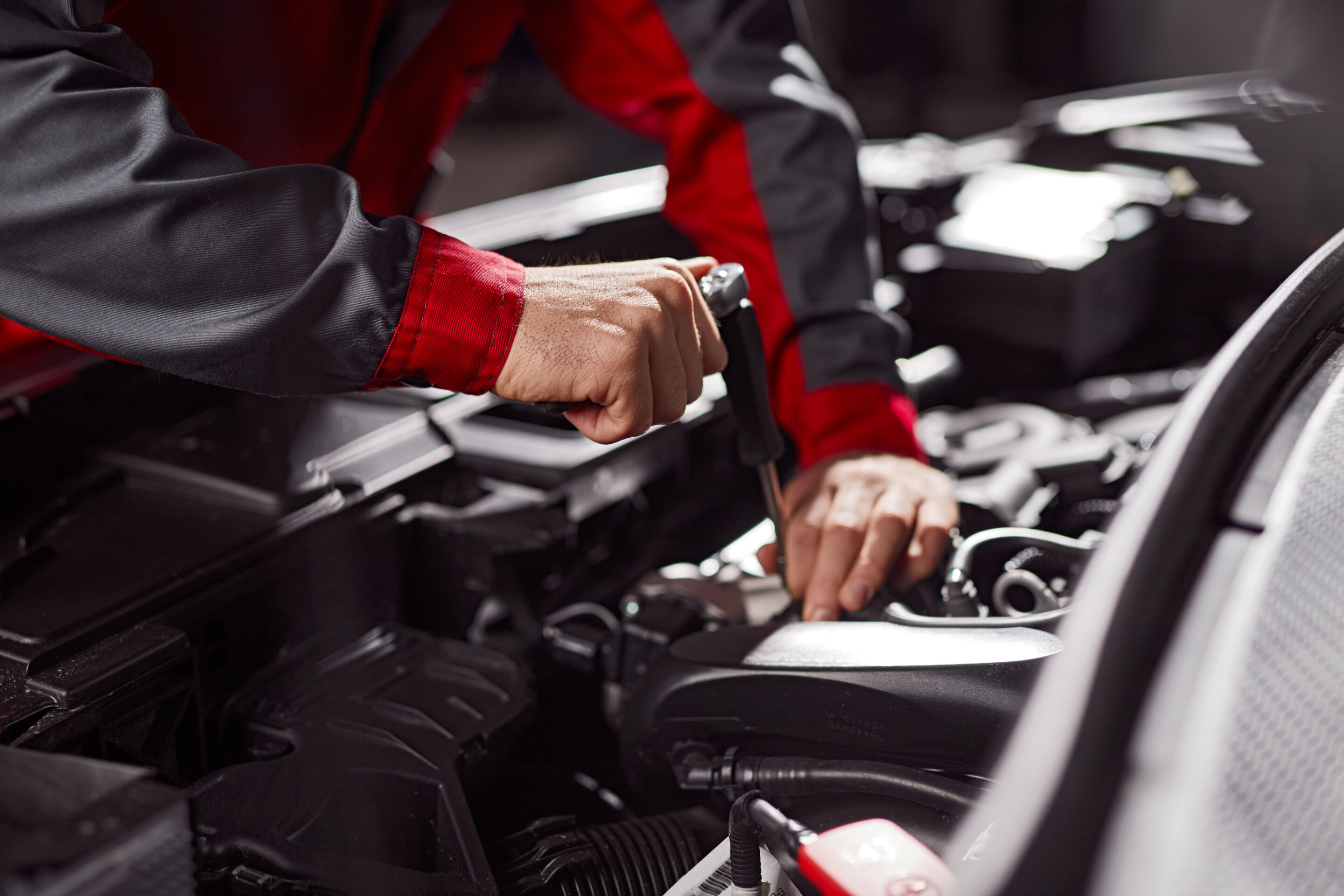 Incoming National Automobile Dealers Association Chairman Ed Tonkin is a second-generation dealer from Portland, Oregon, who says he wants to help reshape NADA into a more efficient organization and involve more of the 62-plus directors around the country in board meetings, plus find a way to more effectively reach out to the organization’s 19,000 dealer members.
Incoming National Automobile Dealers Association Chairman Ed Tonkin is a second-generation dealer from Portland, Oregon, who says he wants to help reshape NADA into a more efficient organization and involve more of the 62-plus directors around the country in board meetings, plus find a way to more effectively reach out to the organization’s 19,000 dealer members.
He steps up to lead NADA following a year of historic industry turmoil and says the organization will be deeply involved in grappling with ongoing negotiations with manufacturers over the fallout from the GM and Chrysler bankruptcies, lobbying for dealers surrounding issues such as CAFE, proposed IRS tax code changes and Congressional Legal and Regulatory proposals, in addition to working on easing continuing floor plan and working capital challenges for dealers.
Recently, we spoke with Tonkin about his career as a dealer and his agenda for NADA in 2010.
Your family history runs deep in the car business. Please tell us what attracted you to the industry.
My father was in this business when I was a young boy so I was always around cars; he drove very cool, impressive cars and of course that influenced me. I worked my school breaks in the business in all of the various departments; even learned to drive on the back lot. I washed cars, worked in the service and parts department, sold cars, and it kind of gets in your blood. Our company is called the Ron Tonkin Family of Dealerships and our tagline is, “For the love of cars.” I think America has a love affair with the automobile and our tag plays to that but also is reflective of our family; my dad’s and my brother’s and my real love of cars. For us we couldn’t be selling widgets or lawn furniture; for us it has to be cars. So it was just a passion for automobiles; always was and still is. My dad was a Ferrari dealer in 1966 when I was 12 years old and I got to ride around in a Ferrari, so it gets into your system.
I worked through college in the business and had no idea I would go to law school until I took two law courses as an undergraduate and had two professors at the University of Washington who made it very intriguing to me. I wanted to get the law degree to help me in business, especially ours, which is such a heavily regulated industry. I graduated from law school in 1979, passed the bar right away, worked for a major Portland law firm and two years later, in 1981, I joined my father’s dealership full time. We had a Chevrolet store since 1960 and he’d just acquired a Toyota store. We also had the Ferrari dealership, Ron Tonkin Gran Turismo, at that time. It’s still a family business with my father and my younger brother Brad. We all own it and it’s grown to 15 stores in Portland with 16 franchises and also a dealership in Reno, Nevada. My Dad, brother and I are all dealer principals. Dad is still president of the corporation. Brad and I are vice presidents.
Do you remember how you made your first sale?
I was nervous as heck and every night I had to come home and have dinner at the family dinner table so I was under a lot of pressure because I wanted to do well, not only for my dad but to prove myself. So this couple was on the fence and I just said, ‘Look, my last name is Tonkin, I’m Ron’s kid, and I’ve got to make the sale, so if anybody’s going to get you a good deal, I’m the guy who’s going to do it for you, so this is your best shot,’ (laughter) and we did it. It was a nice couple and they bought a new Chevrolet.
How have you grown your business?
Like most business owners you wish you could say you made 100% correct decisions but as a business owner if you make at least 51% correct decisions, you’re doing okay. So we’ve made our mistakes over the years. My dad always wanted to try new franchises and my brother and I were probably a little more conservative but he also was influenced by the Honda bug. He was one of the first dealers to have Honda automobiles. Of course everybody laughed at the Honda 600 when it first came out; we all know how that’s turned out. So we’ve had franchises when our timing hasn’t been correct but over time we’ve developed a good portfolio of products, domestic and Asian makes – you can’t call them imports anymore because so many of them are made here in the U.S. – but we’re diversified. I like to say we resemble the story of “the tortoise and the hare.” We’ve seen a lot of hares come and go but we do what we do consistently, and I like to think it’s served us and our customers well and we’re still in the race. In fact, in June 2010 we will celebrate our 50th anniversary.
How are your stores performing in this tough market?
We’re not unique in the sense that we’re suffering like everyone. Our business is off 35% for the group as a whole. Profits have come down, although I’m pleased to say that we’re still profitable and have been every month this year – but we’ve had to make a lot of adjustments. We saw this coming and reacted early. We put together a task force called “Operation Tight Squeeze” and we took two managers from each department from throughout the company and culled through every expense in every dealership and really pared them down. We did hold on to our people and believe loyalty goes both ways, so we did not want layoffs. We have reduced our personnel through attrition and not re-hiring. To survive and remain profitable we cut expenses, our inventory, and our advertising; we cut in all types of areas.
So even though it’s a tough year we’ve been profitable and the key is to try to stay lean as the recovery comes. We’re hopeful and seeing signs of life but we have to stay lean and mean. We’re probably down about 150 of 800 employees through attrition and probably cut back between $4 and $5 million. It’s amazing what expenses you can find when you comb through them. I think we were spending over $180,000 a year on balloons and helium for our stores! It’s absurd and this task force really knocked themselves out finding things we could cut back. We survive just fine without balloons! It’s important to remember that every time you cut a dollar in expense that’s 100% that falls to the bottom line. You can’t save your way into a profit but when you sell a car or a part, only a percentage of that falls to the bottom line.
Let’s shift gears to talk about NADA. You’ve held a number of important positions within the organization and of course your father also led the organization. What made you decide to get active in NADA?
Obviously my father influenced me a lot, not just by being involved himself but also by involving me, and what I mean is when he was president in 1989 they put together a task force called “Project 2000” and the idea was to identify trends and forecast what the automobile business might look like in the year 2000. It was a think tank that put out this white paper. I traveled back to NADA headquarters in McLean, VA regularly. I was around many of the NADA staff whom are still there today and I’ve known them from the mid ‘80s; they are just wonderful and dedicated people. That experience influenced me greatly and I enjoyed the intellectual debate, which required combining your knowledge of the industry with some forecasting ability. Also, watching the way my father committed himself to the industry made an indelible stamp on me as an example of the way you serve the industry that’s been so good to you and to all the dealers and their employees. I think you owe it to give back. It’s easy to give money but hard to give your time and energy. It’s just something I decided I would do.
What do you find most rewarding about the work?
What’s most rewarding is that we make a difference. I’ve seen the great work NADA does on behalf of dealers. Up on Capitol Hill we lobby and we’ve had such a great impact. You know there aren’t people in Congress who are thinking about ways to introduce bills to help auto dealers, it’s usually the other way around. So I think that what’s most rewarding is to see the kind of benefit NADA has for dealers on a day-to-day basis. We’re one of the most heavily regulated industries in this country; I think there’s in the neighborhood of 180 agencies that regulate our industry. Day-to-day business might be impossible if NADA didn’t educate the regulators to prevent them from creating rules in a vacuum without understanding how the real world works for dealers. On a personal level what I find most rewarding is that one gets validated by one’s peer group and there is no finer compliment than to be appreciated by the great people in your own industry. A real bonus is that I have met extraordinary people who I have forged friendships with that I hope will last a lifetime.
NADA has been in the trenches with dealers impacted by the Chrysler and GM bankruptcies. What are we likely to see going forward?
This story isn’t finished yet. I am fortunate to be on NADA’s industry stabilization task force, a small group of us who met with the Obama Automobile Task Force as these companies went through the bankruptcies and continue to negotiate with the manufacturers over dealer terminations. The “hyper speed” at which GM and Chrysler progressed through bankruptcy resulted in hasty dealer network decisions that proved disastrous not only for the dealers and their employees, but also for the companies themselves. And we’re seeing that now; manufacturer’s market share has not improved and in one case has declined. We’re continuing to negotiate with both Chrysler and GM on rectifying the decision to terminate or wind down so many dealers. I can’t publicly say where we are in the negotiations but I can tell you we’re moving the ball forward and are not going to let this issue die. One of our roles is being a watchdog to make sure that all dealers are treated fairly.
Obviously this was an unprecedented period where you had the unthinkable happening with these companies going through bankruptcy and being rushed through at that. We have to take care of all the “regular” responsibilities NADA has and also stay very tuned to manufacturer-dealer relations; how they treat their dealer body – and fairness must be paramount. Up until recently NADA, for political reasons, has been pretty quiet on what we’ve been able to accomplish while others have been crowing loudly. We were in a very untenable position, because NADA is the voice of all dealers. We therefore represent two groups of dealers, the go forward dealers and dealers who were terminated or “wind-down” dealers. We were stuck in the middle, so we’d be criticized by the go forward dealers saying, ‘Leave them alone, you’re going to screw up the deal and the government will pull out the money,” and the terminated and wind-down dealers were saying, ‘Come on, you’ve got to fight for us!” But I will say this: without any question, NADA saved a lot of dealers from being terminated and wound down. Now then, even one termination is unacceptable, a tragedy, but the 789 number of Chrysler dealers was going to be far greater than it turned out to be and NADA was responsible for whittling down that number. And I also know that we were responsible for reducing the eventual number of GM wind-down dealers. And I’m not exaggerating when I say we negotiated face-to-face, toe-to-toe, standing in each others’ faces yelling at each other. The General Motors participation agreement, which was terribly onerous for the GM go-forward dealers, became completely different as a result of a four-hour meeting we had with GM officials at NADA headquarters in McLean; a meeting that was originally scheduled to be an hour and a half.
As far as what I can say about going forward, Congress has pending legislation calling for automatic reinstatement of all dealers who were either terminated or who got wind-down agreements. That’s probably not going to happen, so the effort is to allow each dealer to receive a thorough and fair hearing on their particular situation with complete transparency from the manufacturer as to why they were selected for termination/wind-down and the criteria used to determine such. We are pushing for third-party arbitration as well. We’ve been meeting with GM and/or Chrysler every other week and there’s an old saying in the law, “the wheels of justice grind slowly but they grind fine.”
Negotiations are not moving along as quickly as we and Congress would like but I’m encouraged by the direction the negotiations are taking. A lot of the legislation is contained in a House appropriations bill that has to move along or die by the end of the year. The president has said he’d veto this legislation and I’m convinced that a lot of what was done was done by the White House task force. I know personally through a meeting with Jim Press that he was exasperated, getting direction from administration to reduce the dealer network and still to this day nobody has provided a reasonable or intelligent explanation about why it was important to cut the dealers. It’s completely ironic. The goal in a re-structuring bankruptcy is to allow the exiting company to prosper. Ninety percent of manufacturers’ revenue comes from dealers ordering cars so it makes no sense to cut their customer base.
What else do you see as some of the top legislative and regulatory challenges and what initiatives are we likely to see?
Legislatively if this year ends and the bills for dealer rights expire that would remain a top legislative issue, to get that back on the calendar, but we have a lot of other issues. CAFE (Corporate Average Fuel Economy) is one; having a national or local standards leading to a terrible patchwork of mileage standards is a major issue. Tax issues, such as UNICAP, which is the IRS taking the position that certain expenses (in service and parts primarily) have to be capitalized instead of expensed, creating a real cash flow problem for dealers, LIFO and of course, the estate tax issue remains. The newly created Consumer Financial Protection agency is another concern. NADA was successful in getting an amendment exempting automobile dealers from regulation under this act. We still must be mindful of staying away from more governance in this area as we are already so heavily regulated. Working to loosen credit also is something we will be working on as the credit crisis is certainly not over.
Particularly in our industry we have to be sure dealers can get floor plan financing and capital loans when they need them and banks are reticent right now to finance the automobile dealer business even though they’ve gotten government money, so we’ve worked to get the TALF money out and the SBA to guarantee these loans. Right now we have a situation where GMAC was given money to take care of the Chrysler dealers and they temporarily did but then after vetting the dealers many are having trouble getting their loans. If they can’t get their flooring they’re going to go away.
What in your view is the job of the NADA chairman and what do you hope to be the legacy you leave behind?
I have some clear goals as chairman, internal and external. Internally I want to try to reshape NADA so we are a more efficient organization and better communicators. We have 63 directors from all over the country who are great dealers and great minds and no one person has a monopoly on great ideas; we need to involve more directors in NADA board meetings and I will find a way to do that. We also need to find unique ways to communicate with our 19,000 dealer members; we have to do a better job of reaching out.
Externally we have to stay vigilant on lobbying efforts. That’s critical because, after all, we’ve gone through the most unprecedented time in the history of the auto industry in this country and we’ve been able to have access to and talk with Congress because of our history of being active. We have to reach out to our members around the country by working closely with the state associations to reaffirm and reintroduce people to the many and varied benefits of NADA and what it does for dealers. This past year has been very difficult because we’ve been caught in the middle and have not been able to tell our story, mostly for political reasons, but it’s time to tell that story. These negotiations will wrap up fairly soon and it’s time to let people know where NADA was in the process and how vigorously we fought on behalf of dealers. I stand in awe of the dealer directors around the country and the NADA staff and the work that they do. Their dedication is remarkable. I don’t really have an idea about leaving a legacy. I’m not in this to go down in history as somebody who did this or that, but to work as hard as I possibly can on behalf of dealers and this industry that’s been so good to me and my family. I have been doing that and I’ll continue to and hopefully NADA will be a little better off after I’m gone than it is when I come in.
I would add that the NADA chairman needs to be a leader; clearly and simply, needs to set the tone for the organization, both directors and staff. I remember when I ran the legal and regulatory affairs committee, which I chaired for three years, which made sense because I am a lawyer, but I gave them a homework assignment at one of the committee meetings and you would have thought it was the most horrible thing. But as a result of that meeting we had a national policy change for GMAC on how they viewed and purchased negative equity deals, so you have to lead and set the tone and I think that’s the role of the chairman.
What types of things do you like to do to relax?
I like to cook. I’m a bachelor and I did Thanksgiving for the whole family. I hosted it and did the cooking and that takes your mind off of things. I read an awful lot and I like to fly fish, but I’ve not had a chance to do it. I have a home on the coast and I like to go down there and kind of decompress, but gosh, I think I’ve had 31 trips in the last 42 weeks, and these are long-haul trips because when you’re talking Portland to DC it’s across the country, a five and a half hour trip. So I haven’t had a lot of time but that’s what I like to do, that’s what I dream about (laughter).
If the bailout debate taught us anything, it’s that in some quarters, dealers have an image problem. What can the individual dealer do to promote his or her reputation locally?
Yes, and it’s unfortunate because in large part it’s a hold-over reputation that came from many years ago before dealers evolved into the great businessmen and women they are today. These people are noble in their communities, the ones always called upon to donate to the churches and the Little League and Boy Scouts and Girl Scouts and on and on and they always step up. Dealers also get involved politically so I just think we have to continue to demonstrate by our actions what kind of people we are. It’s interesting; a “white paper” was done not long ago, and people said they don’t care for auto dealers and so forth, except they all loved their own auto dealer, and that’s because they know what kind of people they are. It’s a slow process and we can’t exactly go out and advertise and say, “Hey, dealers are great,” but you prove yourself through your actions and the marketplace has done a good job of weeding out the few bad apples. You just continue to be good citizens, contribute, show by your actions and customer processes that you care and do the right thing and the dealer image will continue to improve.








